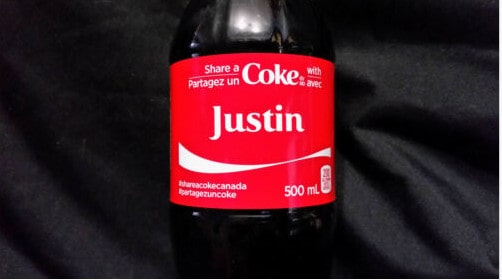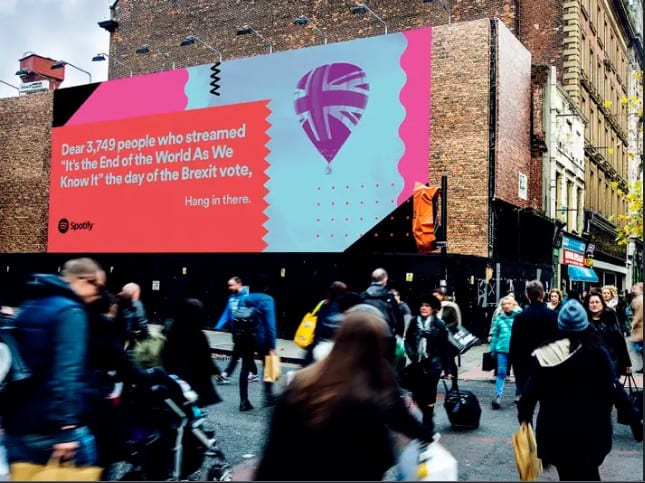This is Part 7 of an ongoing series of articles on how our physical and digital worlds are becoming increasingly intertwined. Each article is based on insights and data extracted from the comprehensive Digital 2020 Report, which features original research from Hootsuite and We Are Social. The first six articles in the series are:
Part 1 – Exploring Our Digital Planet
Part 2 – Good News for Marketers: The Digital World is Expanding
Part 3 – Where Will People See Your Content in 2020?
Part 4 – Sleepless in Siam
Part 5 – How to Survive in an E-Commerce Red Ocean
Part 6 – A Region Primed to Explode (online)
With 4.54 billion internet users and 3.8 billion active social media users on Earth, you would think content creators and marketers would have an easy time finding an audience. The problem is that the internet already has so much content that standing out is a huge challenge. On YouTube alone, for example, over four million hours of content are uploaded every single day.
As we’ve discussed in a previous blog, content creation is outpacing all possible consumption. Marketing expert Mark Schaeffer coined the term “content shock” to describe this phenomenon in his seminal 2015 book The Content Code. Even as COVID-19 keeps one-third of the world’s population living under lockdown conditions where the digital realm is pretty much the only game in town, the competition for eyeballs remains as fierce as ever.
With so much stuff online vying for attention, your digital agency in Thailand must find ways to break through the noise. Unfortunately, simply cranking out content for its own sake won’t work.
“Consumers want quality of resources over quantity from the companies they do business with,” says Matt Kamp, Senior Vice President of Influence & Co., a world-renowned content marketing company. “By ‘quality,’ we mean better targeted, more personalized, highly creative messaging.” However much the online world may continue to evolve, customers will always seek out brands that deliver on these key content features.
Above all, however, your marketing efforts should always seek to inspire confidence, provide connection, and enable convenience. These recommendations, as highlighted by the Digital 2020 Report, should be among your top priorities even during ordinary times – they are doubly important now. As populations around the world continue to socially distance, this interlocking trio of values can help break through people’s isolation and provide a more seamless and satisfying customer journey.
Inspiring confidence through employee advocacy
One of the best ways to engender customer confidence is to turn employees into ambassadors for the brand. As Hootsuite points out, “53% of all global consumers see employees as the most credible source for learning about companies, making genuine internal voices a critical force for building external trust.”
When employees enjoy their jobs and truly believe in the company they work for, they’re usually more than happy to advocate on its behalf – if given the right chance.
MasterCard has involved employees in their social media marketing since 2013. Today, the company provides a playbook for posting on LinkedIn, Facebook, Twitter, Instagram, YouTube, and Pinterest – and encourages employees to share thoughts and photos on these social media platforms during work hours.

Other companies have gone this route as well, achieving similarly impressive results. Bluewolf, a global consulting agency and subsidiary of IBM, launched the #GoingSocial campaign back in 2012. As part of this advocacy program, employees are given access to tools and tutorials to create their own personal online brand and tie it back to Bluewolf’s.
This campaign is a big reason why the company is so well-regarded within its industry. As Global Chief Marketing Officer of Bluewolf, Corinne Sklar says, “Engagement is conversation; advocacy is conviction.”

Depending on your company image and values, an extra-playful approach may hit the right note. Staff at Reebok are encouraged to don the company’s gear and post photos of themselves alongside the hashtag #FitAssCompany.


These methods nicely complement more traditional marketing approaches. Reebok still relies heavily on endorsements from athletes like Irish mixed martial artist Conor McGregor and Canadian NHL superstar Sidney Crosby, as well as celebrities like rapper/entrepreneur 50 Cent and actress Scarlett Johannsson.
Taken by themselves, these types of influencers offer street credibility – but ultimately an incomplete picture of a company. Effective employee advocacy can help fill that void, giving potential customers the sincere opinions of people who actually know the brand. And who is more knowledgeable about the brand than the company’s own employees?
Making a personal connection
Public channels are still the main vehicles to help brands get their message out to the world and attract new customers. But once you’ve gotten someone’s attention on a public channel, you’ll need to take the relationship to the next level if you want to convert. As the Digital 2020 Report observes, “customers want less corporate content and more meaningful connections on social.”
What better way to make a meaningful connection than to give your messaging a personal touch? Many well-known brands are already doing this to great effect.
Each branch of the Bank of Queensland has its own Facebook page, and managers respond directly to online messages. The BOQ actually partnered with Hootsuite to develop this customer engagement strategy. “Now, we have a great personalized level of interaction with our customers,” said BOQ social business leader Jenny Devine.
With the 2008 financial crisis still within recent memory, consumers may be understandably hesitant to embrace commercial banks. Yet this context makes it all the more important to invest in better communication. The response to the BOQ’s personalized approach to marketing has been overwhelmingly encouraging. Devine says that across all 200 of the BOQ’s Facebook pages, about 98% of the comments they receive are positive.
The approach taken by the BOQ is undeniably effective, but it also happens to be quite labor intensive. Sometimes, making a personal connection doesn’t even require all that much work – as long as you have a captivating idea.
For example, in 2014, Coca-Cola launched the now-famous “Share a Coke” campaign in the US. In the hopes of winning over teenagers and young adults, the company released Coke bottles with 250 of the generation’s most common names on the labels. As a result of this campaign, Coke saw its first increase in sales volume in 14 years.

Another excellent way to reach people is to find creative ways to use the information gleaned from data collection. Spotify collects a tremendous amount of data, which it uses to make personalized music recommendations. As we can see below, the company’s “Thanks 2016, it’s been weird” campaign put that data at the center of its marketing content.

This brilliant campaign found a creative new way of using the billboard, one of the most traditional (and some would say outmoded) marketing tools, to tell individual stories. They took something completely impersonal – cold, hard data – and turned it into a deeply personal campaign.
Spotify’s Chief Marketing Officer Seth Farbman explained his thinking: “For us, data inspires and gives an insight into the emotion that people are expressing.” Indeed, marketers and data analysts should always remember that there are real people behind those numbers.
Even without the marketing budgets of Coca-Cola or Spotify, companies can still benefit from data analysis and more personalized messaging. As we’ve discussed before, many social media platforms offer tools that allow you to track and analyze consumer data, then use it to send targeted messages to individual followers.
Enabling convenience
“To deliver the seamless interactions customers expect, you must deepen your understanding of their needs and habits,” the Digital 2020 Report advises. “Unify customer information and measurement across all digital channels to better identify where you can make the journey faster and easier.”
Once you’ve earned a potential customer’s trust and enticed them with personalized messaging, it’s crucial that you don’t lose them at the most important step: The sale. eBay, Nike, and Renault all offer excellent illustrations of optimized customer journeys – all the way from social media, to private messaging, to sales.
Regardless of whether users are on the eBay website, mobile site, or app, the user interface is organized in the same manner and looks and feels exactly the same way. Customers can browse and purchase items across channels without having to learn how to navigate different layouts.
As we covered in Part 5 of this series, a high percentage of online shoppers abandon their carts without completing the checkout process. Unexpected bumps in the customer journey often cause people to wander off, but sometimes people simply decide against making a purchase for their own reasons. Later, if they have a change of heart, they may return to their cart – only to find that it has been automatically emptied. To solve this problem, Nike created the digital “shopping bag”, which unlike most carts, keeps items until the user decides to remove them.
This subtle understanding of customers’ needs and habits can make all the difference between a sale and a virtual walk-away.
Today’s consumers have increasingly high expectations, and businesses must be both creative and agile to meet them. But companies don’t need to build this capability from scratch. As mentioned in the Digital 2020 Report, Adobe offers Customer Intelligence tools that give users a “360-degree view of the customer through social data and insights across the entire company.”
French automotive titan Renault has used Adobe’s tools to great effect, boosting registration to the MY Renault portal by 20%. By focusing on the customer journey, Renault was able to standardize branding, gain insights that allow for the creation of more personalized messages, and create a scalable platform to support future marketing campaigns.
In today’s hyper-competitive marketplace, an excellent product simply isn’t enough anymore. Brands must take every opportunity and use every available tool to improve the customer experience. As Hootsuite stresses in the report: “Experiences matter more than products for today’s consumers.”
A strategy for 2020 and beyond
While building confidence, providing connection, and enabling convenience often require advanced technical capabilities, it’s important to remember that technology merely offers tools. What really matters are the guiding principles behind your use of those tools and an effective digital agency in Thailand can make sure that you stay on the right path.
Here, as elsewhere, empathy plays a particularly important role. If you can actually put yourself in someone else’s shoes, and see the world from their perspective, you’ll be able to create enduring value for them.
Even before COVID-19 sent us retreating into our homes, people all around the world were going online in hopes of being listened to and understood. If your brand’s story, messaging, and interface can give people a genuine sense of satisfaction in these areas, not only will you have the attention of your digital audience – you’ll also have them eager to support you every chance they get.